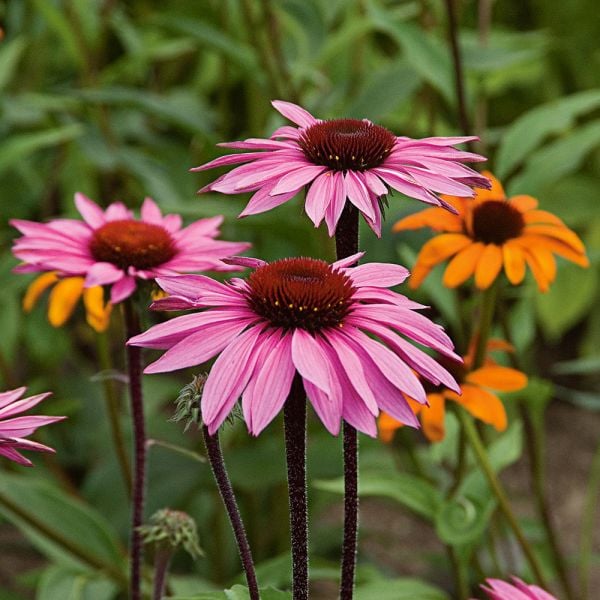Many of you have heard of this popular herb. Echinacea is native to north America and was used 400 years ago by the Great Plains Indian tribes. You have probably walked by a plant as it is a gardeners favorite and butterflies love it! There are many varieties but it is considered a coneflower and looks similar to a daisy with rose, pink or purple petals. Both the root and the upper parts of the plant can be used. The roots have a high concentration of volatile oils while the upper parts contain polysaccharides for immunity.
Echinacea is best known to help stimulate the immune system which helps combat colds and flu symptoms. If taken beforehand, it helps lessen the chances of even getting a cold. It is also used as a natural pain killer tapping into the endocannabinoid system. It has been proven to reduce inflammation pain in arthritis and burns.
It has also been shown to work as a natural laxative and also as a calming agent. One form of echinacea was shown to be as effective as a mild anxiety drug! It is also helpful for a good night’s sleep. Some studies have shown it helps with ADHD in children and adults.
Because it is anti inflammatory, it can help alleviate numerous problems that occur with too much inflammation like arthritis but also eye problems and respiratory problems.
Its antioxidant qualities also are beneficial for the skin.
It is used in creams and gels for reducing wrinkles and acne. It can also help regenerate skin cells when used topically.
Like many herbs, it is also beneficial for the stomach and the gastrointestinal tract. Some people are trying Echinacea as an alternative to cancer treatment or used alongside other treatments, although no human studies have been done.
If you are looking for a natural way to boost your immune system this winter, then I would try echinacea. But check with your doctor first!

